Updated October 11, 2022. Ajuda National Palace: A quick guide covers history, how to get there, admission, hours, what you will see, and information on the new Royal Treasure Museum at the Pálacio Nacional da Ajuda.
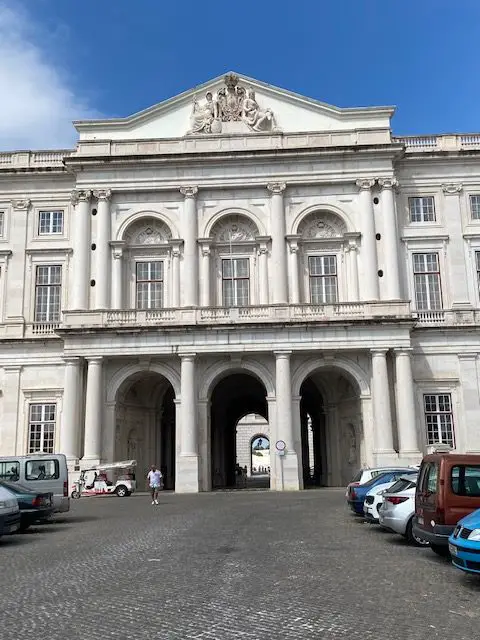
History of the Ajuda National Palace
Ajuda Nacional Palace, or the Palácio Nacional da Ajuda, was the last royal palace built in Portugal.
The Ajuda Palace was originally a temporary encampment built on the highest hill in the Ajuda neighborhood.
King José I took up residence on the hill following the 1755 earthquake that destroyed his Ribeira Palace at Praça do Comércio.
The king had wanted a wooden structure and wanted to be on a hill, for fear of another earthquake.
The wooden palace was destroyed by a fire in 1794.
Construction on the permanent neoclassical palace began in 1796.
Construction stopped in 1807 when Napoleon’s troops entered Portugal and the Portuguese Royal Family moved to Brazil.
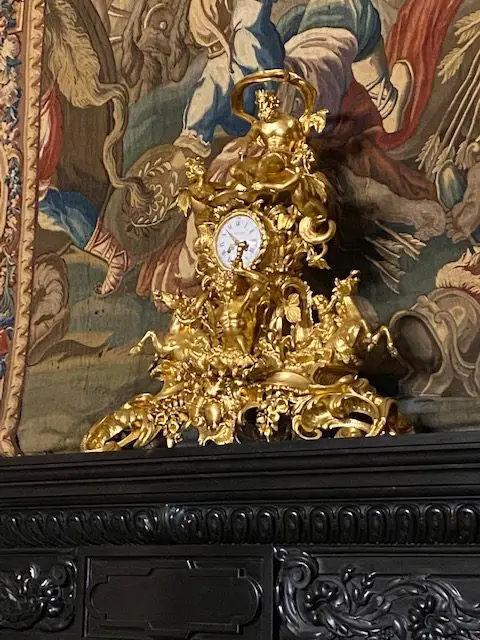
King Luis I and his bride, the Italian Princess Maria Pia de Savoia, moved in in 1861. They spent lavishly on decoration.
The Ajuda Palace was abandoned again in 1910 when the Republican Revolution forced the King to flee Portugal.
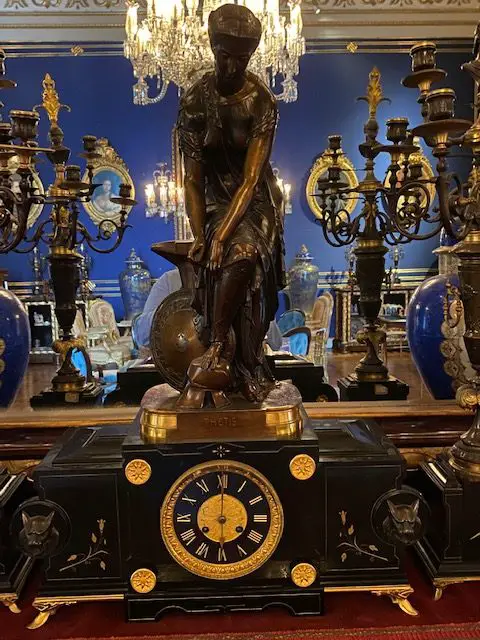
Originally designed to be one of the largest palaces in Europe, construction paused or slowed several times, and the project was never actually completed.
Nonetheless, it served as the official royal residence and is still used for formal ceremonies today.
Today the President of Portugal does not live in the Ajuda National Palace, but in the nearby Belém Palace.
The Ajuda Palace reopened as a museum in 1965.

What to expect to see at Ajuda Palace
The best word to describe the palace is “Opulent.” Rooms are decorated from floor to ceiling with paintings, tapestries, red velvet curtains, silk wallpaper, and crystal chandeliers. Most of the ceilings themselves are either ornate carvings or frescoes.
In front of the palace is a statue of Carlos I, the last king to occupy the royal home. The statue lines up with the main entrance.
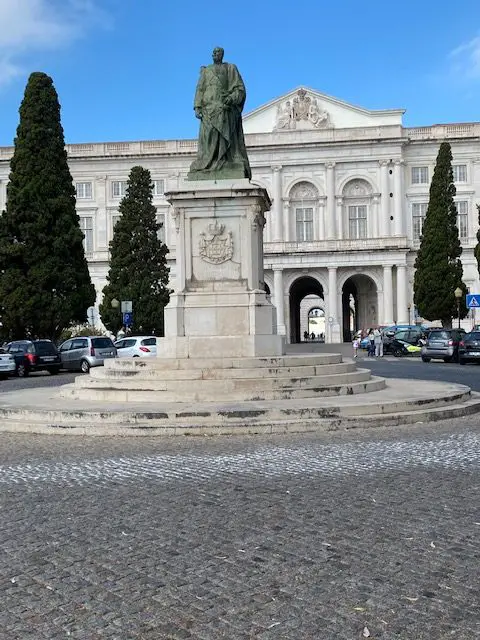
At the main entrance, you will find a massive port cochere (covered entrance) with beautiful vaulted ceilings. There are 23 marble statues depicting different virtues such as Humanity, Justice, and Generosity.
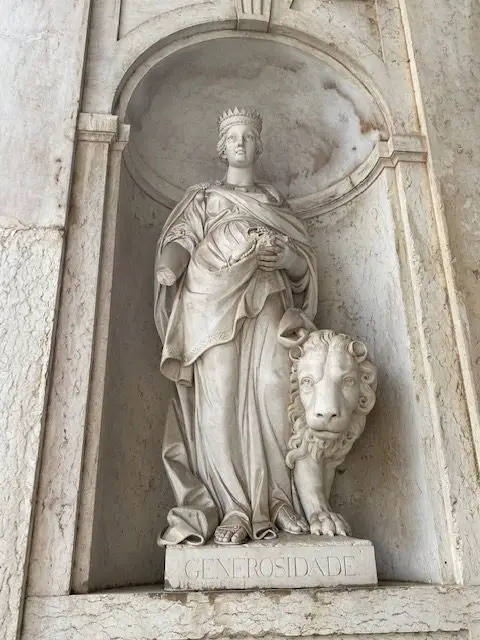
This space opens onto a beautiful courtyard paved with black and white Portuguese stone.
The palace’s sculpture collection holds more than 400 pieces dating from the first half of the 19th century through the early twentieth century.
The ceiling in the winter garden was a gift from the viceroy of Egypt. The winter garden has a marble Tuscan fountain in the middle of the room and at one time housed plants, flowers, and exotic birds.
The palace holds more than 17,000 pieces of porcelain and stoneware dating from the 16th century through the 19th century. Pieces come from China’s Qing and Ming Dynasties, as well as France and Germany.
In order to preserve the decor of the house, not all of the collection is on display at the same time.
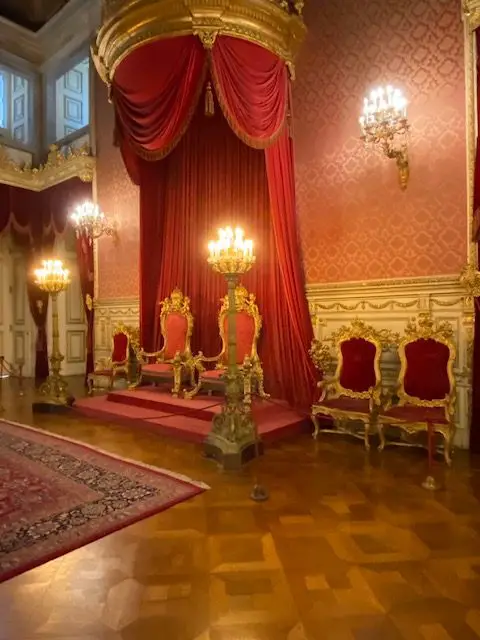
The Throne Room takes up an entire wing of the palace, and the dining room has crystal chandeliers, silk-covered chairs, and a frescoed ceiling, as well as an upper gallery from which musicians would serenade the dinner guests.

The furniture collection was assembled by the royal family over the second half of the 19th century. The eclectic collection features pieces demonstrating multiple European and Eastern styles.
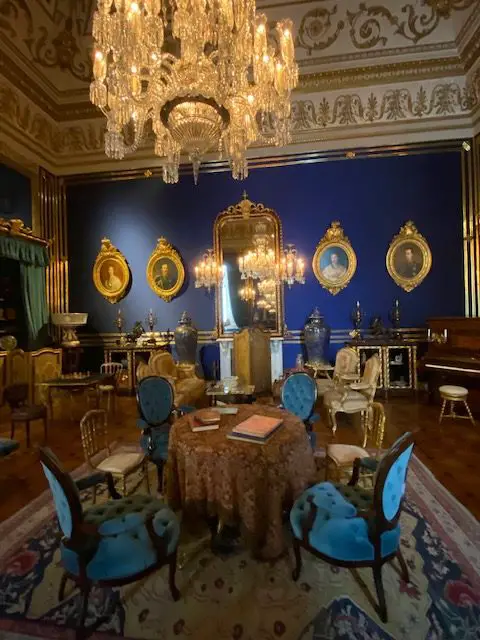
Tapestries, glassware, silverware, and photography are also exhibited.
The palace has more than 450 oil paintings and some 800 watercolors, drawings, and sketchbooks that range from the 18th and 19th centuries. The chapel contains El Greco’s Holy Face of Christ.

What’s new at the Palacio Nacional da Ajuda?
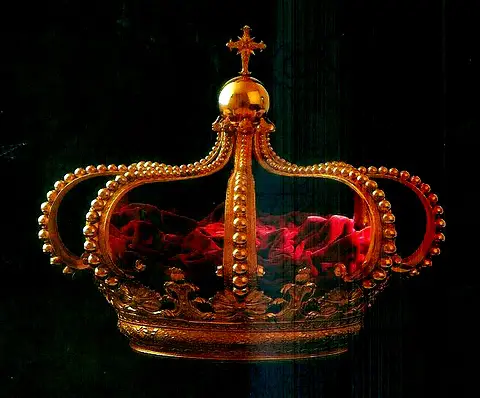
The western wing of the palace was renovated in 2021 and now houses the Portuguese Crown Jewels in the Royal Treasure Museum of the National Palace of Ajuda.
Click here to read my Portugal’s Royal Treasure Museum opened in 2022
Beginning in June 2022, visitors are gettinga glimpse of the Portuguese Royal Crown (also known as the Crown of Dom João VI) which was made by goldsmith António Gomes da Silva in 1817.
The crown is pure gold and has eight arches, but does not hold any gems.
Visitors will also be able to appreciate Dom João VI’s Sceptre of the Armillary, also created by Dom António Gomes da Silva in 1817.
Admission to the Royal Treasure Museum is not included in the price of admission to Ajuda National Palace.
How to get to Ajuda National Palace
From Praça da Figueira:
Located at Largo da Ajuda, (GPS coordinates: 38.70779630984223, -9.197634379510596) take Tram 15E. For more information, see How to get from Alfama to Belém (Hint: Tram 15E)
Or take Bus 760 (thirty minutes). It stops in front of the palace.
Bus 732 (thirty minutes). Stops at the nearby Botanical Garden.
Bus 714
From Cais do Sodré:
Tram 18 (twenty-five minutes)
CP Train to Belém (seven minutes), followed by a 15-minute walk up an incline on Calçada da Ajuda
By car:
Take Avenida 24 de Julho west from Lisbon toward Belém. Turn onto Calçada da Ajuda and go 1 km (.62 mile).
Ajuda National Palace – Hours and Admission

10 am – 6 pm. Closed on Thursdays
Admission: €5. Ages 65 and up pay €2.50
Admission is free with a Lisboa Card. To learn more, see my Lisboa Card | Everything you need to know
Admission is free for residents and citizens every Sunday.
Ajuda National Palace official website:
http://www.palacioajuda.gov.pt/en-GB/palace/ContentDetail.aspx
What’s near the Palácio Nacional da Ajuda?
- Coaches Museum – One of the most popular museums in Lisbon, exhibits royal carriages National Coach Museum – one of the best carriage museums in the world
- Quake Lisbon – An interactive museum that teaches about science, architecture, history, and the Lisbon Earthquake of 1755 is right next door to the Coaches Museum – Visit the new Quake Lisbon Earthquake Experience
- Royal Botanical Garden of Ajuda
- Museum of Art, Architecture and Technology (MAAT) Visit Lisbon’s Museum of Art, Architecture, and Technology (MAAT)
- Pastéis de Belém The big difference between Pastéis de Belém and Pastéis de Nata
- Jerónimos Monastery Is the Jerónimos Monastery worth visiting?
- Monument to the Discoveries Lisbon’s Monument to the Discoveries | Everything you need to know
- Belém Tower Surprising Belém Tower facts
For more information on the Belém neighborhood, see my article Lisbon’s historic Belém neighborhood | Everything you need to know
Thank you for reading. I am not affiliated with any businesses mentioned on this page.